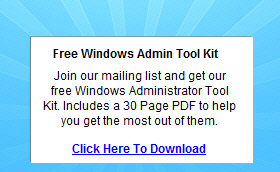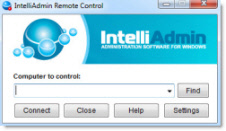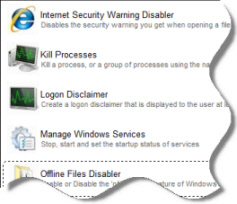PowerShell Command for PF Replication
We are having an issue regarding spikes in WAN traffic to some of our international Exchange 2007 servers. I'd like to know if there is a powershell command that can be run to allow me to find out which Public Folder servers in our home office are
replication with the PF servers in our international sites. It would also be great to see what the replication interval is as well. Do any of you powershell guru's know if this is possible?
Thanks!
Michael
December 13th, 2010 1:03pm
Well there is nothing much Microsoft supports this issue but you can schedule a different replication time.
SYNOPSIS
Use the Set-PublicFolder cmdlet to set the attributes of public folders.
SYNTAX
Set-PublicFolder -Identity <PublicFolderIdParameter> [-AgeLimit <EnhancedTi
meSpan>] [-Confirm [<SwitchParameter>]] [-DomainController <Fqdn>] [-Hidden
FromAddressListsEnabled <$true | $false>] [-IssueWarningQuota <Unlimited>]
[-MaxItemSize <Unlimited>] [-Name <String>] [-PerUserReadStateEnabled <$tru
e | $false>] [-ProhibitPostQuota <Unlimited>] [-Replicas <DatabaseIdParamet
er[]>] [-ReplicationSchedule <Schedule>] [-RetainDeletedItemsFor <EnhancedT
imeSpan>] [-Server <ServerIdParameter>] [-UseDatabaseAgeDefaults <$true | $
false>] [-UseDatabaseQuotaDefaults <$true | $false>] [-UseDatabaseReplicati
onSchedule <$true | $false>] [-UseDatabaseRetentionDefaults <$true | $false
>] [-WhatIf [<SwitchParameter>]] [<CommonParameters>]
Free Windows Admin Tool Kit Click here and download it now
December 13th, 2010 1:42pm
There you go -
GOTO- Server Configuration -- Mailbox - Database Managment - Public Folder Storage Group - then Right click Properties of your Public Folder database.
Click on Replication TAB and change the default Replication Interval from 15 minutes to let say 60 minutes and the size of the data as you wish.
December 13th, 2010 1:46pm
Hi Michael,
Some other information for you:
http://technet.microsoft.com/en-us/library/bb691120(EXCHG.80).aspx
http://technet.microsoft.com/en-us/library/bb629523(EXCHG.80).aspx
If you still have some issue, please tell us.
Regards!
Gavin
TechNet Subscriber Support
in forum
If you have any feedback on our support, please contact
tngfb@microsoft.com
Please remember to click Mark as Answer on the post that helps you, and to click Unmark as Answer if a marked post does not actually answer your question. This can be beneficial to other community members reading the thread.
Free Windows Admin Tool Kit Click here and download it now
December 14th, 2010 5:06am
So from what I am hearing, there is no powershell script commmand that can tell me which PF's in our home office replicates with the ineternational servers and at what time intervals. Am I reading this correctly?
-Michael
December 14th, 2010 8:26am
I was doing some more investigation and was wondering if PFDAVADMIN can give me a list of the replicated folders and to which server they replicate. Does anyone know if this tool can accomplish that?
Free Windows Admin Tool Kit Click here and download it now
December 14th, 2010 10:51am
Hi Ebunky,
Could you please make a test using below cmdlet:
get-publicfolder -identity \ -recurse |ft name,identity,repicas,replicationschedule,orignatingserver
and then confirm whether the information are what you want.
PFDAVADMIN is a good tool to admin the public folder, it could do many tasks as referred in the below link:
http://technet.microsoft.com/en-us/library/bb508858(EXCHG.65).aspx
It also achieve your target.
Regards!
Gavin
TechNet Subscriber Support
in forum
If you have any feedback on our support, please contact
tngfb@microsoft.com
Please remember to click Mark as Answer on the post that helps you, and to click Unmark as Answer if a marked post does not actually answer your question. This can be beneficial to other community members reading the thread.
December 15th, 2010 1:27am
True, this tool makes an Admin life much hassle free while dealing with PF. Do make sure you run it on a 32-bit OS, else you eill end up getting errors.
Free Windows Admin Tool Kit Click here and download it now
December 15th, 2010 10:23am
Hi Gavin,
Thanks for the powershell info. It seems to work, but is very difficult to determine as I need it dumped to a text or CSV file with all details so I can import into Excel. Can I use export-csv with this?
-Michael
December 15th, 2010 3:35pm
Hi Ebunky,
You coudl export it as below:
get-publicfolder -identity \ -recurse |ft name,identity,repicas,replicationschedule,orignatingserver |export-csv c:\foldername.csv
Regards!
Gavin
TechNet Subscriber Support
in forum
If you have any feedback on our support, please contact
tngfb@microsoft.com
Please remember to click Mark as Answer on the post that helps you, and to click Unmark as Answer if a marked post does not actually answer your question. This can be beneficial to other community members reading the thread.
Free Windows Admin Tool Kit Click here and download it now
December 15th, 2010 10:18pm
Thanks for the info Gavin, however, the export to csv does not seem to work correctly. I get a bunch of garbage output into the CSV when the command you specified is run. I am also trying to get the FULL path names of folders and PF store names
to appear in the report. I know there must be a way to do this......
-Michael
December 16th, 2010 10:20am
Hi Michael,
Use below:
get-publicfolder -identity \ -recurse |ft name,identity,repicas,replicationschedule,orignatingserver > c:\filename.csv
Regards!
Gavin
TechNet Subscriber Support
in forum
If you have any feedback on our support, please contact
tngfb@microsoft.com
Please remember to click Mark as Answer on the post that helps you, and to click Unmark as Answer if a marked post does not actually answer your question. This can be beneficial to other community members reading the thread.
Free Windows Admin Tool Kit Click here and download it now
December 16th, 2010 10:25pm


